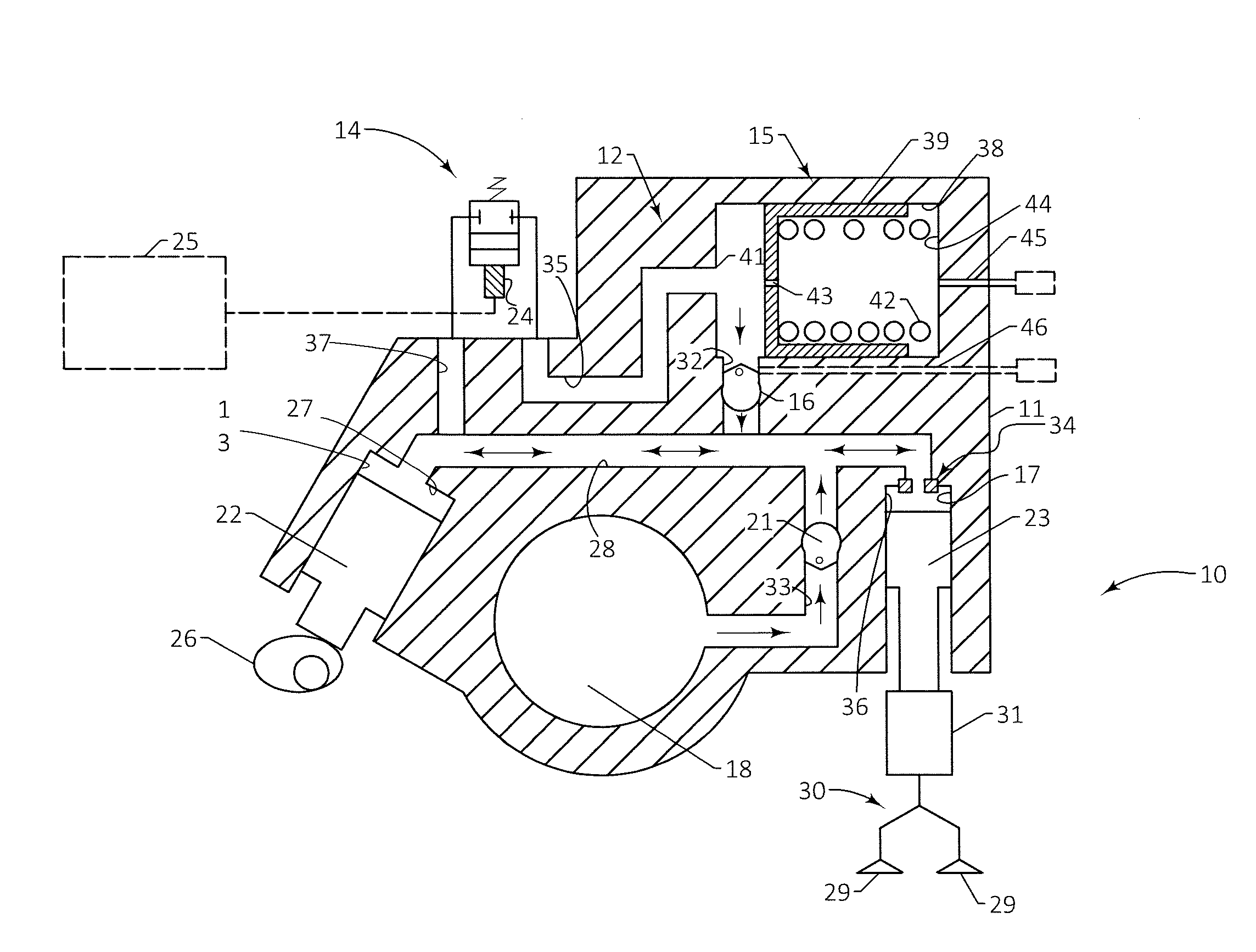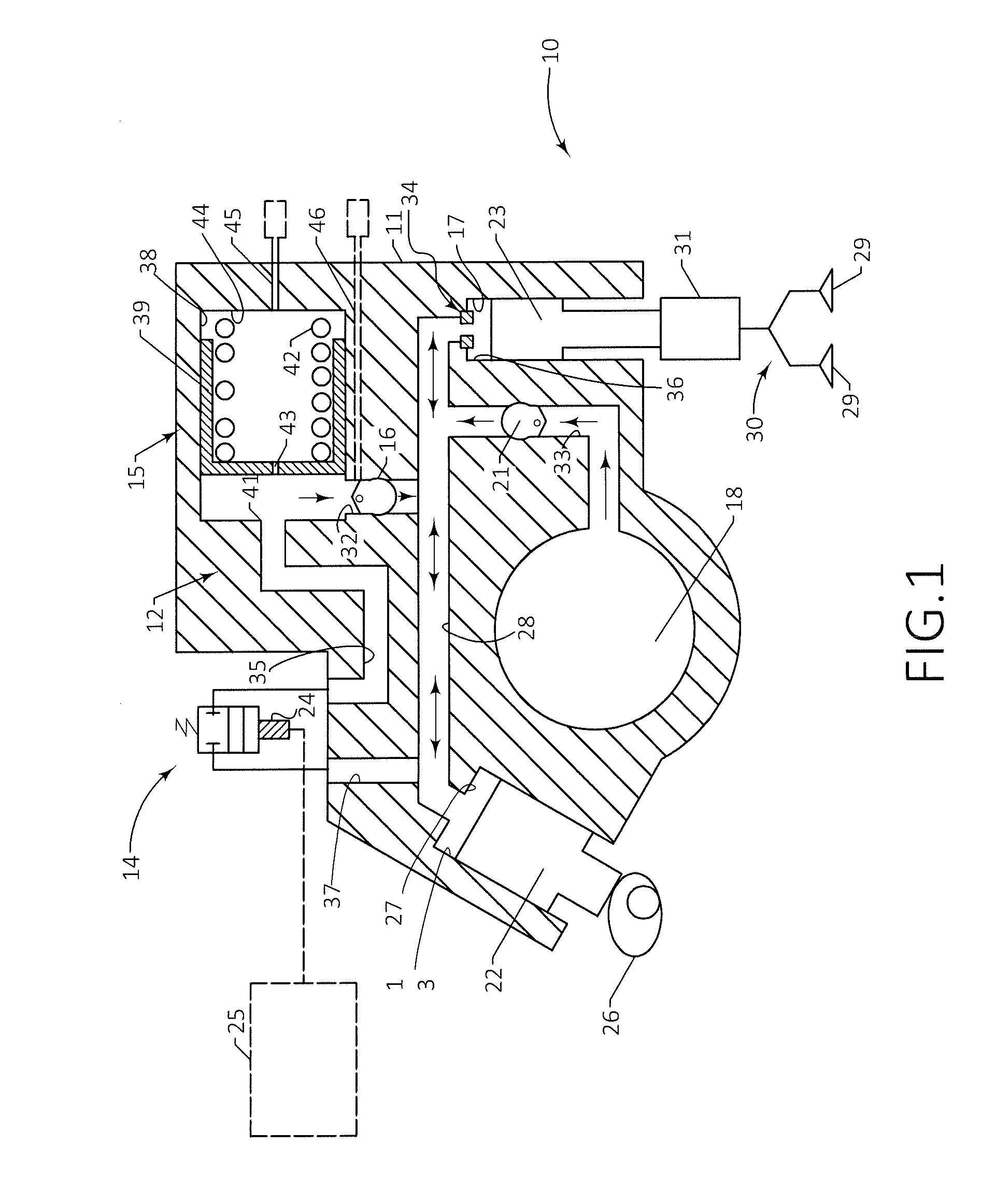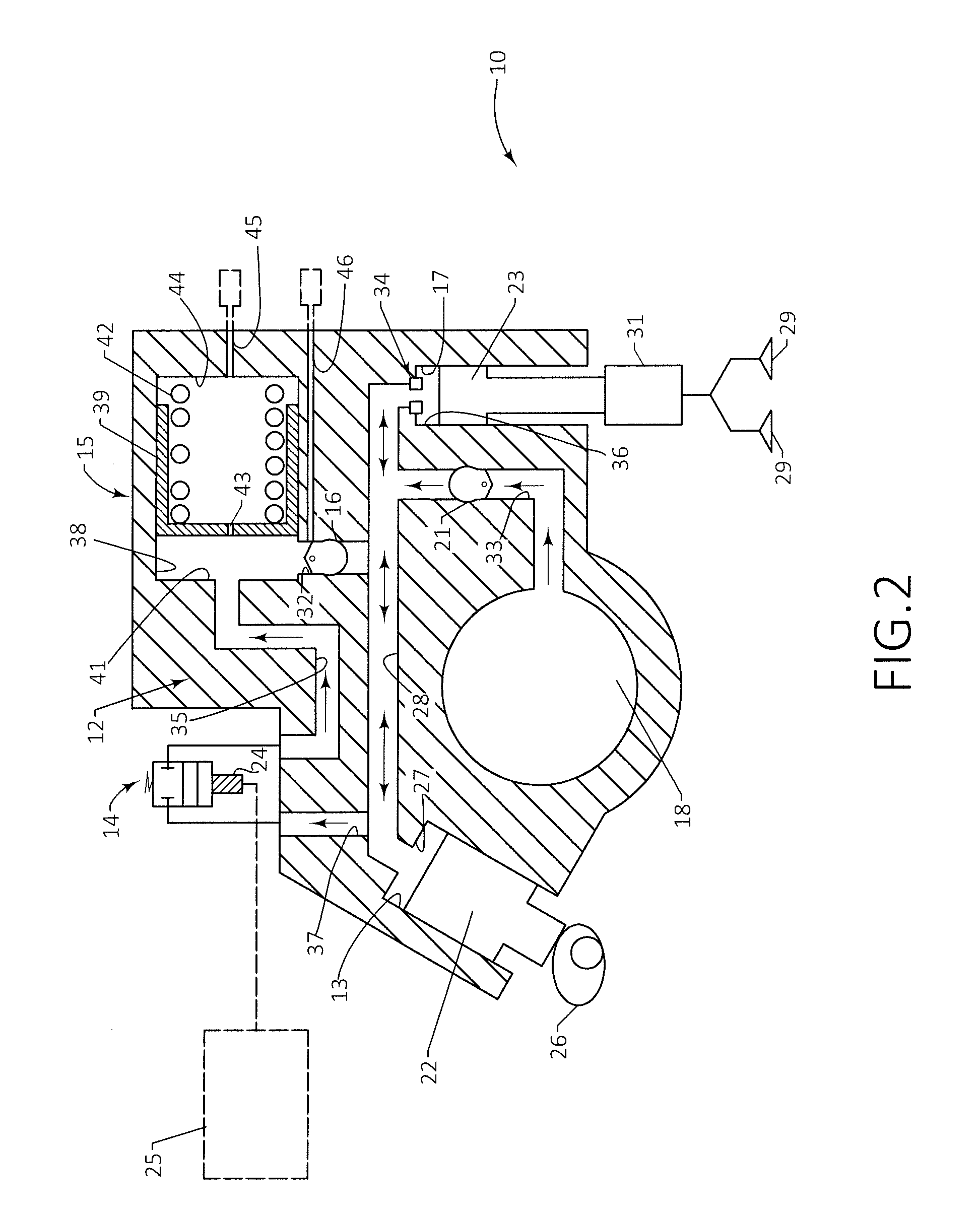Intake Valve Closure Control for Dual-Fuel Engines
a technology of intake valve and dual-fuel engine, which is applied in the direction of non-mechanical valves, machines/engines, mechanical apparatus, etc., can solve the problems of compression ignition, lng can detonate and damage the engine, and not work well
- Summary
- Abstract
- Description
- Claims
- Application Information
AI Technical Summary
Benefits of technology
Problems solved by technology
Method used
Image
Examples
Embodiment Construction
[0024]FIG. 1 illustrates part of an engine 10 that may include a block 11 or other suitable structure for accommodating the hydraulic circuit 12. The hydraulic circuit 12 may include a master cylinder 13, a control valve 14, an accumulator 15, a first one-way valve 16, a slave cylinder 17, and a fluid supply 18 and a second one-way valve 21. The master cylinder 13 may accommodate a master piston 22. The term master cylinder 13 is intended to cover a cylindrical receiving space for the master piston 22. The master cylinder 13 may be provided in the form of a bore, as shown in FIGS. 1-2, or the master cylinder 13 may be a separate component (not shown). Similarly, the slave cylinder 17 may accommodate a slave piston 23. The slave cylinder 17 may be in the form of a bore, as shown in FIGS. 1-2, or it may be a separate component as illustrated in FIGS. 3-6 and described below.
[0025]Returning to FIG. 1, the operation of the hydraulic circuit 12 with the control valve 14 in its normally c...
PUM
 Login to View More
Login to View More Abstract
Description
Claims
Application Information
 Login to View More
Login to View More - R&D
- Intellectual Property
- Life Sciences
- Materials
- Tech Scout
- Unparalleled Data Quality
- Higher Quality Content
- 60% Fewer Hallucinations
Browse by: Latest US Patents, China's latest patents, Technical Efficacy Thesaurus, Application Domain, Technology Topic, Popular Technical Reports.
© 2025 PatSnap. All rights reserved.Legal|Privacy policy|Modern Slavery Act Transparency Statement|Sitemap|About US| Contact US: help@patsnap.com



